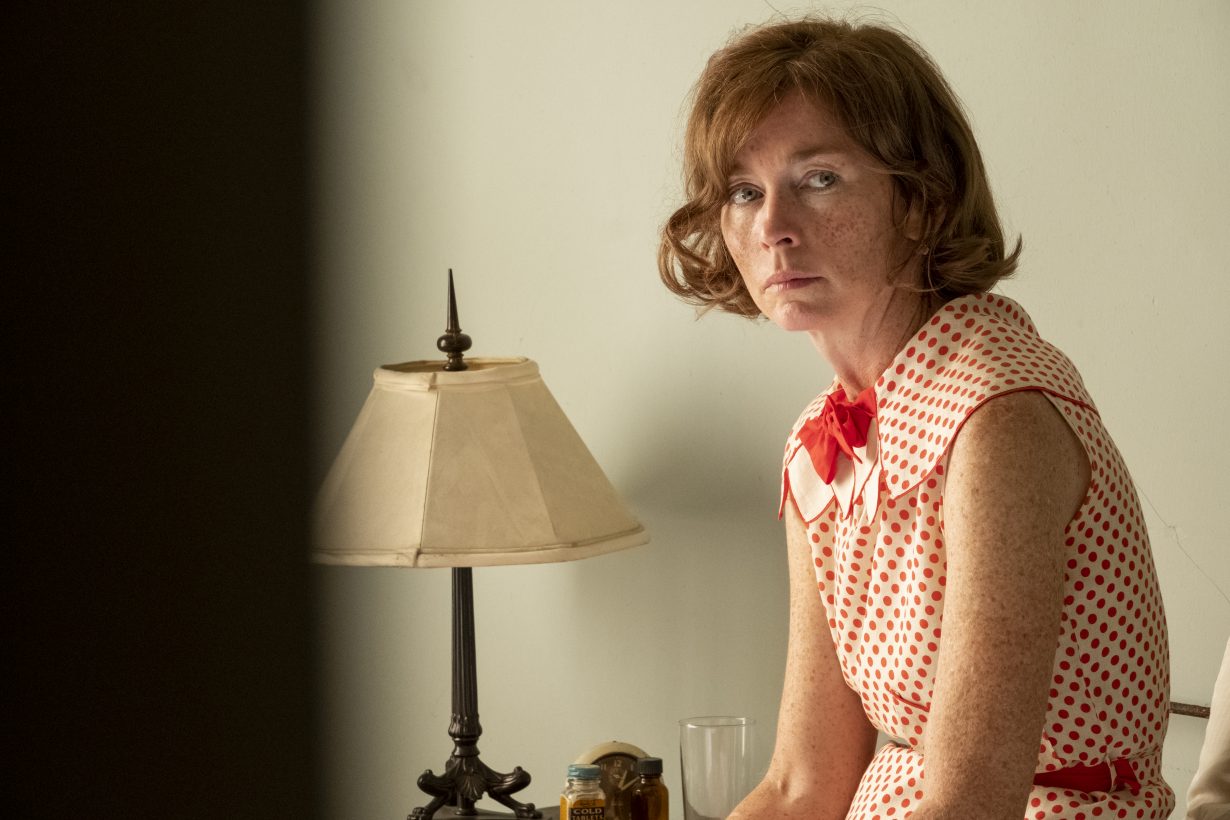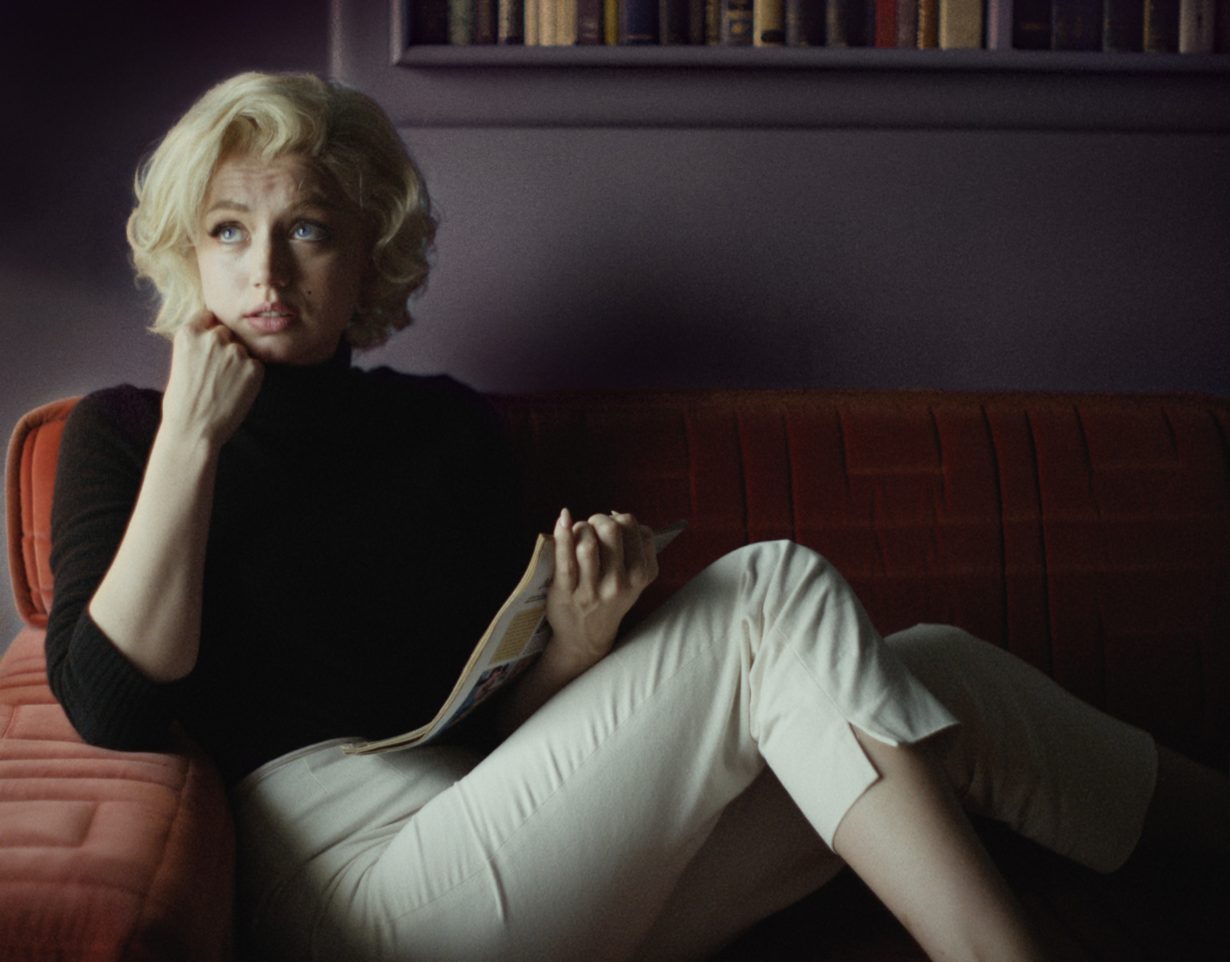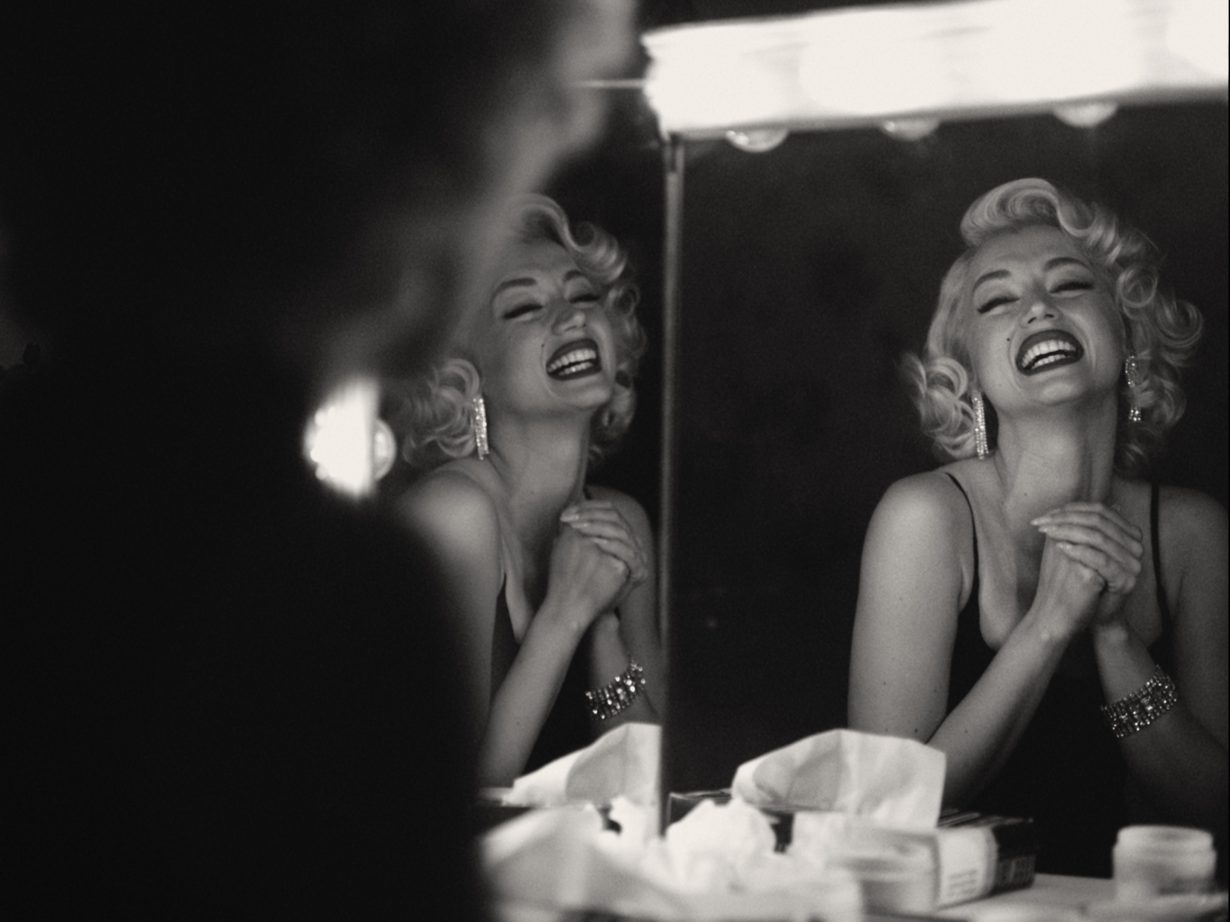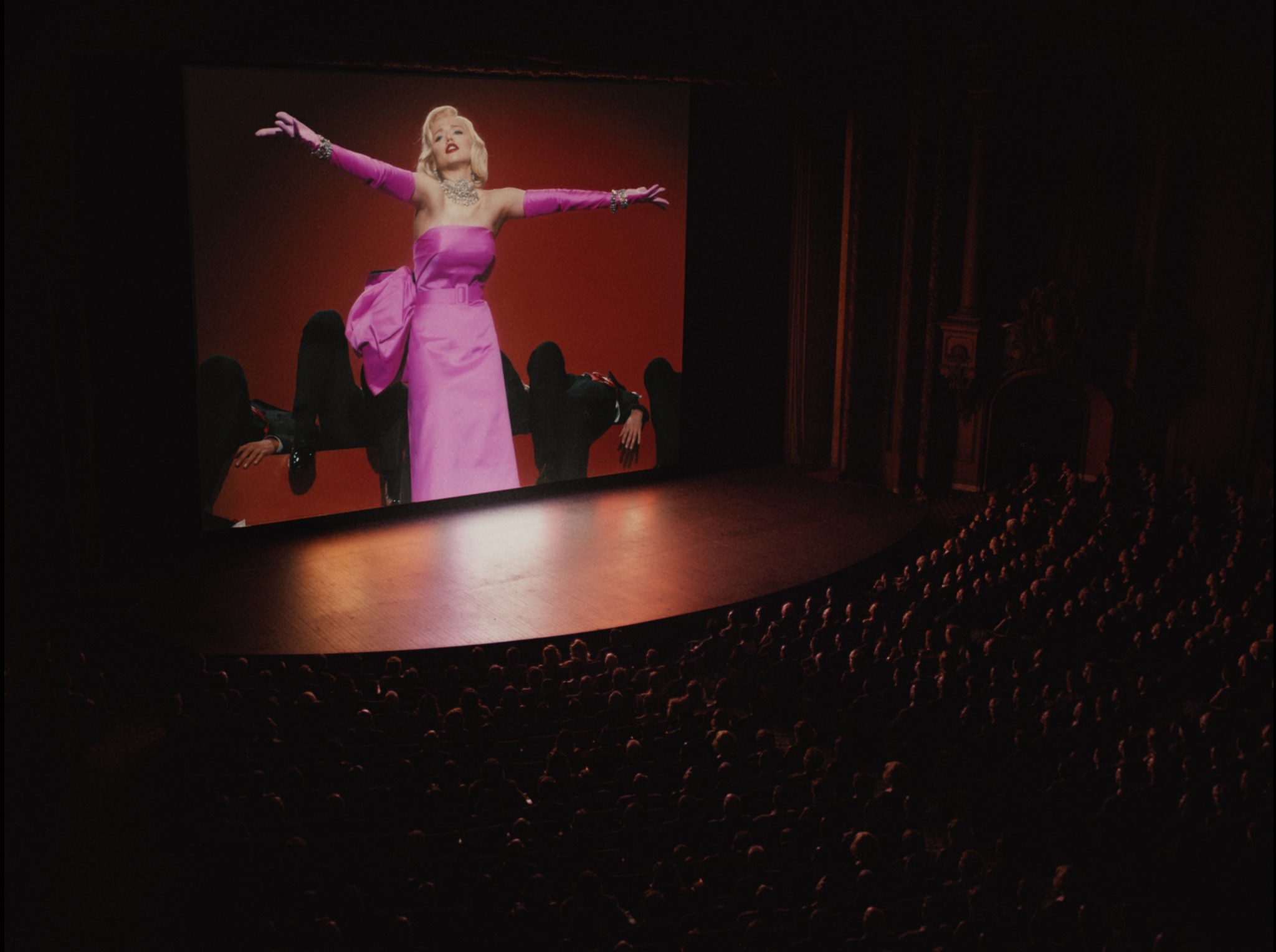Andrew Dominik’s film is the latest in a line of attempts to uncover some overarching ‘truth’ to the icon’s life. What are we really looking at when we think we are looking at Marilyn Monroe?
The life of Marilyn Monroe, as told in Andrew Dominik’s Blonde, is one defined by lack, signified by one of the very first images we see: a black-and-white portrait of a Clark Gable-esque movie star in the run-down Los Angeles apartment where a young Norma Jeane lives with her mother Gladys. It is an image of her father, Gladys tells Norma. The portrait hangs over a long crack running through the wall – this is not a film to shy away from howlingly obvious symbolism. The absent father haunts Norma throughout her adult life, following her through her stardom as Marilyn Monroe; the movie premieres, mental breakdowns and divorces until she is shown reuniting with him, lifeless in her bed at 36. It is so boring, so uninteresting, so tiresome to tell the story of the woman who singularly embodied the act of modern self-creation, whose life ran alongside the currents of 20th century Hollywood, Cold War politics and post-war working-class American identity, through a prosaic pop Freudian tale about a lost little girl with daddy issues. But that is what we have.
Gladys resents her daughter because, as she explains in an exposition-style monologue while trying to drown her six-year-old in the bath, she blames Norma for their abandonment. Then a time jump to adult Marilyn winding her way through a restaurant, the camera zooming in her ass while she is checked out by other patrons (the film offers plenty of commentary on the alienating objectification experienced by Monroe while formally indulging in the type of shots that brought it forth). She meets with her agent, an older man, about her career. He made her, he says. The man behind Marilyn. Then, a meeting with an older movie producer, who rapes her, then gives her her first role. As she leaves, we hear Monroe’s first on-screen song, with the chorus affirming that “every baby needs a dad/dad/daddy”.


And that is Dominik’s Marilyn: a doll stripped of her motivations, ambitions and interests; a plaything to be moulded by the men in her life, as she lurches around from pseudo-father to pseudo-father like a helpless naïf, searching for the deliverance that will never arrive. ‘Marilyn’s whole vibe’, according to Dominik, ‘is “rescue me”’.’ Ana de Armas as Monroe is wide-eyed, frozen in confusion or terror when confronted with a range of challenges: sexual pleasure (she has to be coached into it, by men); social interactions; and in a case that managed to further stretch the thin believability of her character, an egg (“Is this to eat? … I mean, standing up?”). Later, on a date with Joe DiMaggio, she is asked how she got her start in acting. The film could have pulled anything from the Joyce Carol Oates novel that inspired it: scenes of Monroe as a working model; the classes she took as an aspiring actor; even her fascination with cinema as a child and exposure to the industry through Gladys, who worked at a major film studio (her mother’s work is not mentioned in the film, which hews to the archetypal needy and incomplete single mother). Instead, we see a flashback of the rape. “I guess I was discovered”, she replies. This is the origin story of a woman that denies her the status of first mover – any mover – in her own life.
Oates wrote Blonde as an act of restoration. She has said that she was struck by a photograph of a ‘not even especially beautiful’ 17-year-old Norma Jeane, and wanted to tell the story of the girl who would grow to become the ubiquitous commodity that was Marilyn Monroe. Her novel, which follows the broadest outlines of Monroe’s biography, should not be classified as non-fiction, Oates qualifies. A ‘radically distilled “life” in the form of fiction’, the author claims it ‘aspires to ‘spiritual/poetic truth’.
Which suggests that in fiction the ‘truth’ of the supposedly artificial Monroe can be revealed; so what exactly is this truth endeavouring to say? Reading biographies alongside the novel, I was struck by how the ‘poetic truth’ of Blonde’s fictional Norma Jeane jarred with the portrait emerging from the nonfiction works. Where there was ambition and humour in the latter, there was derision and humiliation in the former. For historian Lois Banner in Marilyn: The Passion and the Paradox (2012), on a teenage Norma Jeane trying to become more popular in school: ‘Norma Jeane eliminated the blouse as well as the bra and camisole worn under it. She then took the cardigan, turned it around and buttoned it in the back. The sweater clung to her breasts, achieving the “sweater girl” style. She called that sweater, which was red, her “magic sweater”’. That same sweater emerges in Oates’s Blonde, now seen through the eyes of a student taking acting classes alongside her: ‘Sometimes she would wear a sweater, and the sweater would be two sizes too small because that was all she owned… She was so shy you’d have thought she was mute. Sudden movements and loud laughter startled her. She’d pretend to be reading a book before class started. Once it was Mourning Becomes Electra by Eugene O’Neill. Another time it was Chekhov’s The Three Sisters. Shakespeare, Schopenhauer. It was easy to laugh at her.’

The differences continue, as self-assertion is turned into self-abasement. I read about Monroe’s boredom with housewifery and ambition in the film industry; in Blonde, the divorces are ruptures caused by male disgust at her apparently cheap and undignified cinema roles. Monroe was famously open about sex – she professed it ‘part of nature’ and refused to apologise for posing in nude photos – though in the novel she is described as ‘the Blonde Actress, who felt so little sexual desire, inhabiting her voluptuous body like a child crammed into a mannequin’. In fiction, her interest in reading, politics and intellectual life are presented as dilettantish and laughable. She mispronounces Schopenhauer.
Dominik’s adaptation is generally faithful to the novel, with all too necessary cuts (the sprawling novel runs 738 pages long). It enjoys the artistic freedoms of fiction but forgoes the more difficult task of addressing its stakes – Blonde’s marketing peddles the standard Oscar-baiting narrative vaunting ‘authenticity’, complete with headlines praising de Armas for ‘becoming Marilyn’, claims that Monroe’s ghost haunted the set, and soundbites that appear to elide the distinction between Oates’s creation and its real-life inspiration (for de Armas: ‘We’re telling her story from her point of view. I’m making people feel what she felt.’) In both film and novel, restoring the woman behind the commodity-image involves presenting her as a pitiable child, whose only interest is to return to the domestic sphere and discover the happy family life she never had. All she wants is to settle down ‘like any girl’, she tells DiMaggio; motherhood would suit her. As de Armas’s Monroe said this, I thought of Monroe once saying, ‘I’ve always had too much fantasy to be only a housewife’ – and the rumours that she had at least a dozen abortions during her lifetime.

This number is disputed among biographers (Blonde assumes there were a few, and those in the film all involve the actor being held down and operated on against her will.) Many details of her life are clouded in debate, including the identity of her father, the number of foster homes she lived in, the men she married and, most famously, the circumstances of her death. Her co-written autobiography is contested and filtered through what Sarah Churchwell in The Many Lives of Marilyn Monroe (2004) called an ‘all-male coterie of writers, editors, and litigious ex-business partners’. Wherever you go in Monroe paraphernalia, you will see the corrosive effects of fame, how the individual will – even one said to be as iron-clad as hers, not that Blonde shows it – crumbles against a capitalism that knows there are images to be licensed, profits to be made. Monroe had wanted her belongings to go to friends after her death and spoke of her ambivalence toward being rendered a commodity, a ‘thing’. Today, her legacy is handled by a conglomerate called the Authentic Brands Group. ‘We have great partners who do gift items at $4.99’, ABG’s president has said of her wide appeal, ‘and then yet we have a Dolce & Gabbana T-shirt at $299’.

What makes her popularity so enduring, beyond a brand management company’s readiness to license her image on t-shirts? Though today people are quick to cite her sex appeal, scholars have pointed to how her celebrity functioned as a mirror of sorts, a site onto which people could project their own anxieties. There were the fears of a nation: Jacqueline Rose wrote in Women in Dark Times (2014) that Monroe became a beacon of light for post-war America seeking to purge itself of its ugly past; ‘one of her great gifts was to distil suffering into a face and body meant to signify pleasure and nothing else’. There were men seeking flight from their own weakness: Norman Mailer said ‘Marilyn suggested sex might be difficult and dangerous with others, but ice cream with her’ (in films, she was often cast as the eternally appeasing comedienne soothing the egos of anxious men). And there are women who see in her evidence of the generalised truth of female suffering; Monroe as, in the words of her friend Hedda Rosten, the ‘quintessential victim of the male’.

These approaches tend to present Monroe as an innocent: luminous, almost primordially good – and unaware of her power (it is remarkable how, for someone who was at the height of her profession, Monroe is often cast as without having any.) For all its overblown fanfare, Dominik’s Blonde arrives, sixty years after Monroe’s death, as another addition to a well-worn tradition of presenting her as ‘child-girl’. She is the archetype of femininity; the carrier of goodness; the figure who can absolve us of our sins. It is telling that in Dominik’s film, anything from traditionally ‘masculine’ worlds – of politics, of business, of craft – are exorcised from her narrative, leaving a parable of the divine and uncorrupted feminine, destined to give birth and find salvation in motherhood (and tragically stopped from it) but instead is pawed at and ultimately cannibalised by the enterprising male. With its campy flourishes – a talking fetus; a shot of a night sky lit up with stars fading into a collection of sperm wriggling under the microscope; an erection denoted by an upturned rocket on a television screen – I wondered if the film was a pastiche, a grand meta-joke, but its motivations seemed entirely sincere.
‘Repetition can itself be a pleasure’, Churchwell wrote in her biography, but it is also ‘the painful repetition of being helplessly stuck in a pattern, in thrall to an obsession or grief, a destructive habit we can’t break.’ Perhaps that’s why every few years, like clockwork, a story of Monroe re-emerges in the cultural imagination, promising this time to be the thing to solve the mystery, reveal the girl behind the commodity-thing, redeem her from the suffering inflicted on her. And yet we are always left more in thrall to the myth and no more enlightened.
We might be lying to ourselves about our own motivations, and what we are really looking at when we think we are looking at Monroe. If one of Monroe’s gifts after the war involved distilling ‘suffering into a face and body meant to signify pleasure and nothing else’, Dominik turns the carrier of pleasure into a signifier of suffering, attempting to assail our consciences with evidence of our collective sins, the emptiness of our dreams, the price of mass spectacle. What is lost, again, is any consideration of what she actually has to say.
